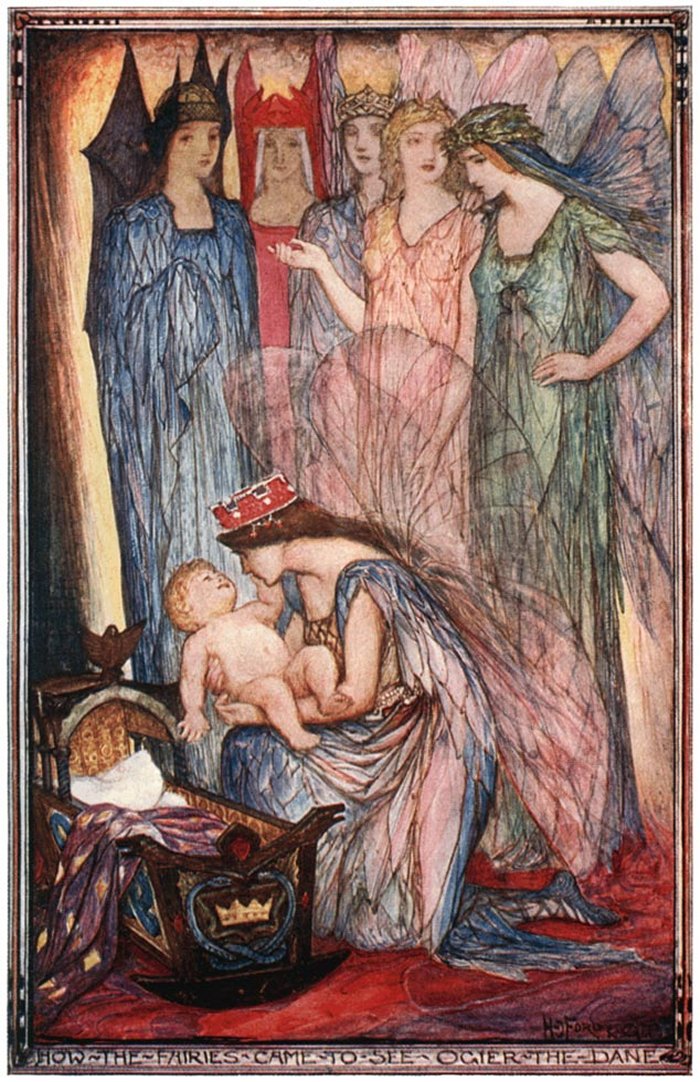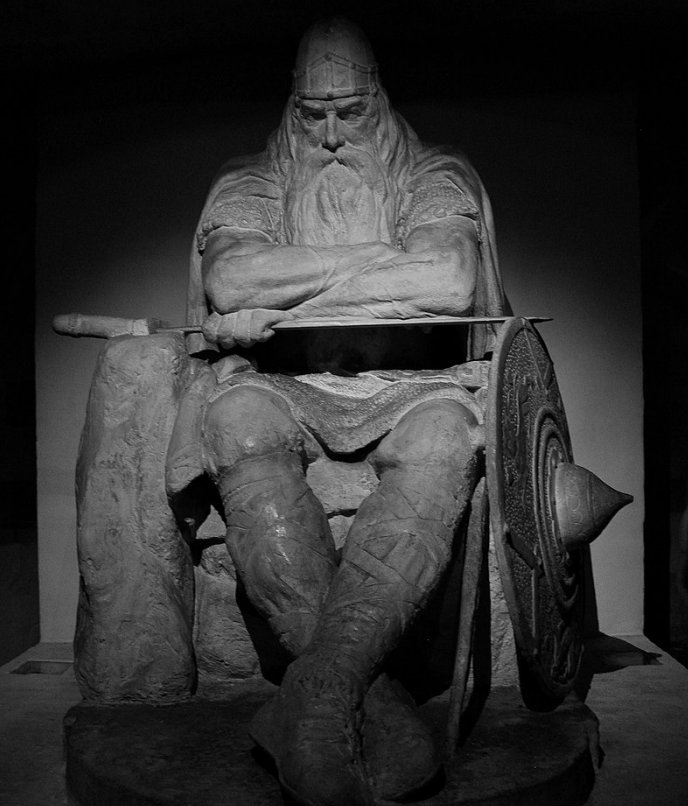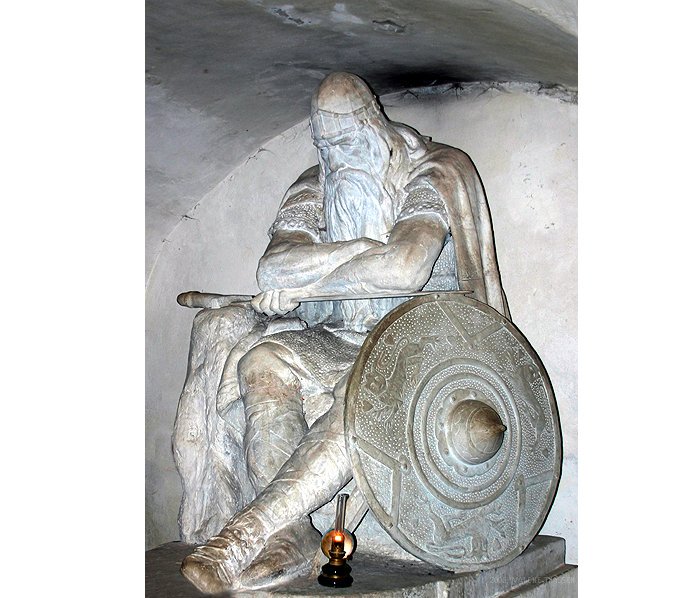Legend Of Sleeping Hero Holger Danske: Viking Warrior Who Never Died
A. Sutherland - AncientPages.com - Holger Danske, also called Holger or Ogier the Dane, was a fearsome Viking warrior.
His entire life, from birth to death, is shrouded in mystery. According to ancient legends, Holger Danske never died. Instead, he sleeps in the dark cellar of Kronborg Castle at Elsinore, the setting of Shakespeare's Hamlet.
How the Fairies Came to See Ogier the Dane by Henry Justice Ford (1921) "And then the sixth fairy, the youngest and the most beautiful of all, who was none other than Morgan le Fay, the Queen of Avalon, caught up the child, and danced about the room in rapturous joy."
Holger Danske's history is difficult to trace because almost nothing is known about him. The information we possess is based on legends and myths.
The first mention of the sleeping hero Holger Danske comes from the Chanson de Roland (Songs of Roland), an epic poem based on the Battle of Roncevaux in 778, during the reign of Charlemagne. It is the oldest surviving major work of French literature and exists in various manuscript versions, which testify to its enormous and enduring popularity in the 12th to 14th centuries.
There is a prophecy related to the birth of Holger Danske. He was destined to become one of the most fearless warriors, never to be vanquished.
According to a legend linked to Arthurian myth, a Danish king known as Ogier the Dane was taken to Avalon by Morgan le Fay. He returned to rescue France from danger, then traveled to Kronborg castle, where he sleeps until he is needed to save his homeland. Image credit: Luis Antonio Carrasc - CC BY 3.0
According to French and Scandinavian myths, Holger Danske was Geoffrey's son, the first Christian king of Denmark, during the eighth century. He was trained to become a great warrior from an early age. He was very tall, about 213 centimeters (7′).
Legends say Holger possessed an enchanted sword that was given to him by the fairy Morgana. His magical sword was a great weapon that helped him become invincible. When Muslims invaded Danish territory, Holger joined forces with Charles Martel (c. 688 – 22 October 741), the Duke and Prince of the Franks.
Together with Charles Martel, he fought against the Muslims at Poitiers in AD 732. At one point in his life, he was captured and became a hostage of Charlemagne. Holger eventually became Charlemagne's vassal and developed a fearsome reputation. Yet, Holger could also be merciful.
Hans Peder Pedersen-Dan's statue of Holger Danske at Kronborg castle, Denmark
For example, he even forgave Charlemagne's son for killing his son, Baldwin, with a chessboard.
Holger Danske's legend became famous thanks to Hans Christian Andersen, who said that Holger never died. Instead, he is a sleeping hero residing in the dark cellar, where no one ever goes, of Kronborg Castle at Elsinore, the setting of Shakespeare's Hamlet.
Dressed in full armor made of iron and steel, Holger sits before a table, resting his head on his arm. His beard has grown long into the table as he slumbers and dreams of Denmark.
Every Christmas Eve, an angel of God assures him that what he has dreamed is accurate and that he can safely go back to sleep because Denmark is in no real danger. But if danger ever does come, then old Holger Danske will arise, breaking the table in pieces as he pulls out his beard! And then he will come forward and strike out and be heard in all the lands of the Earth.
Written by – A. Sutherland - AncientPages.com Senior Staff Writer
Updated on March 1, 2023
Copyright © AncientPages.com All rights reserved. This material may not be published, broadcast, rewritten or redistributed in whole or part without the express written permission of AncientPages.com
More From Ancient Pages
-
 Secrets Of 160,000 Ancient Texts Kept In The Abbey Library Of St. Gall May Soon Be Unlocked By AI
Linguistic Discoveries | Aug 23, 2021
Secrets Of 160,000 Ancient Texts Kept In The Abbey Library Of St. Gall May Soon Be Unlocked By AI
Linguistic Discoveries | Aug 23, 2021 -
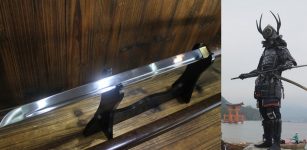 Secrets Of The Japanese Shirasaya Sword Mounting
Featured Stories | Sep 11, 2018
Secrets Of The Japanese Shirasaya Sword Mounting
Featured Stories | Sep 11, 2018 -
 Ancient Skulls From Ukraine Reveal Early Modern Humans Came From The East
Archaeology | Nov 9, 2023
Ancient Skulls From Ukraine Reveal Early Modern Humans Came From The East
Archaeology | Nov 9, 2023 -
 Old Bone Links Lost American Parrot To Ancient Indigenous Bird Trade
Archaeology | Nov 8, 2022
Old Bone Links Lost American Parrot To Ancient Indigenous Bird Trade
Archaeology | Nov 8, 2022 -
 Climate Change, Not Genghis Khan Caused Demise Of Central Asia’s River Civilizations
Archaeology | Dec 17, 2020
Climate Change, Not Genghis Khan Caused Demise Of Central Asia’s River Civilizations
Archaeology | Dec 17, 2020 -
 ‘Exceptionally’ Rare Iron Age Axle Found In Suffolk
Archaeology | Jan 26, 2023
‘Exceptionally’ Rare Iron Age Axle Found In Suffolk
Archaeology | Jan 26, 2023 -
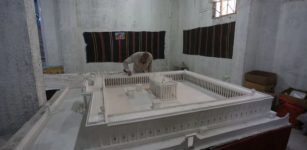 Memory Of Palmyra’s Ancient Ruins Preserved Thanks To One Man’s Dedication And Mini Models Of Lost Temples
Archaeology | Mar 24, 2021
Memory Of Palmyra’s Ancient Ruins Preserved Thanks To One Man’s Dedication And Mini Models Of Lost Temples
Archaeology | Mar 24, 2021 -
 A New William Shakespeare First Folio discovered on Isle of Bute, Scotland
Archaeology | Apr 10, 2016
A New William Shakespeare First Folio discovered on Isle of Bute, Scotland
Archaeology | Apr 10, 2016 -
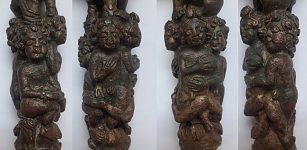 Roman Britain Executions Revealed – New Evidence
Archaeology | Aug 14, 2021
Roman Britain Executions Revealed – New Evidence
Archaeology | Aug 14, 2021 -
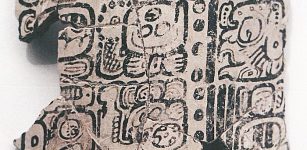 Painted Komkom Vase With Longest Hieroglyphic Text Unearthed In Belize
Archaeology | Apr 24, 2019
Painted Komkom Vase With Longest Hieroglyphic Text Unearthed In Belize
Archaeology | Apr 24, 2019 -
 Millennia-Old Sumerian Tripod Vase Dedicated To God Ningirsu, The Son OF Enlil
Archaeology | Oct 6, 2016
Millennia-Old Sumerian Tripod Vase Dedicated To God Ningirsu, The Son OF Enlil
Archaeology | Oct 6, 2016 -
 Uncovering 16th Century Scottish Royal Dockyards Used By King James IV’s Navy
Archaeology | May 24, 2018
Uncovering 16th Century Scottish Royal Dockyards Used By King James IV’s Navy
Archaeology | May 24, 2018 -
 Mystery Of The British Pompeii Deepens – Bronze Age Settlement Destroyed By Dramatic Fire
Archaeology | Jun 23, 2019
Mystery Of The British Pompeii Deepens – Bronze Age Settlement Destroyed By Dramatic Fire
Archaeology | Jun 23, 2019 -
 Researchers Reconstruct Genome Of Centuries-Old E. Coli Using Fragments Extracted From An Italian Mummy
News | Jun 18, 2022
Researchers Reconstruct Genome Of Centuries-Old E. Coli Using Fragments Extracted From An Italian Mummy
News | Jun 18, 2022 -
 Carvings Of Mythological Masks Unearthed In Ancient Theater Of Stratonikeia
Archaeology | Nov 27, 2020
Carvings Of Mythological Masks Unearthed In Ancient Theater Of Stratonikeia
Archaeology | Nov 27, 2020 -
 Mystery Of Biblical Noah’s Strange Connection With Red-Skinned Giants And The Watchers – Celestial Secrets – Part 2
Biblical Mysteries | Jan 28, 2021
Mystery Of Biblical Noah’s Strange Connection With Red-Skinned Giants And The Watchers – Celestial Secrets – Part 2
Biblical Mysteries | Jan 28, 2021 -
 Connection Between Viruses And Ancestors Of All Complex Life Has Been Found
Archaeology | Jul 1, 2022
Connection Between Viruses And Ancestors Of All Complex Life Has Been Found
Archaeology | Jul 1, 2022 -
 Ancient Feneos excavations: defensive walls, five towers, sanctuary unearthed
Civilizations | Aug 23, 2015
Ancient Feneos excavations: defensive walls, five towers, sanctuary unearthed
Civilizations | Aug 23, 2015 -
 65 Byzantine-Era Tombs Unearthed In Stratonikeia – World’s Largest Marble City
Archaeology | Feb 24, 2017
65 Byzantine-Era Tombs Unearthed In Stratonikeia – World’s Largest Marble City
Archaeology | Feb 24, 2017 -
 On This Day In History: Ferdinand Magellan Discovers Guam – On Mar 6, 1521
News | Mar 6, 2017
On This Day In History: Ferdinand Magellan Discovers Guam – On Mar 6, 1521
News | Mar 6, 2017

